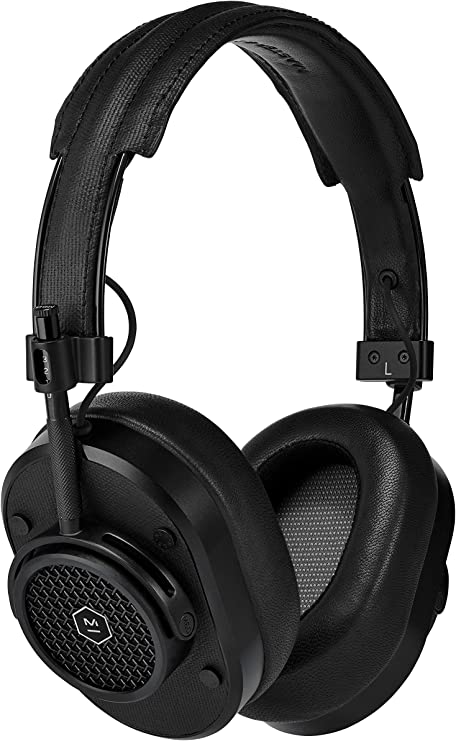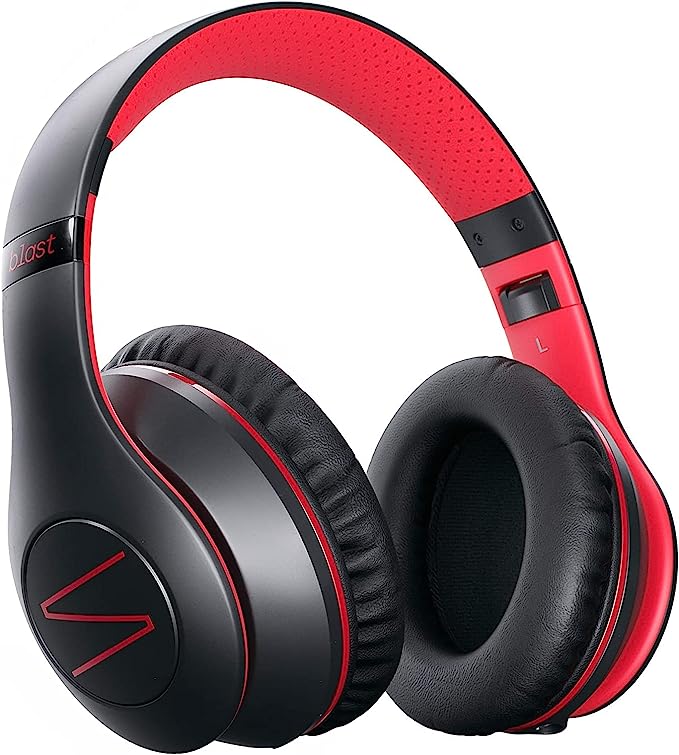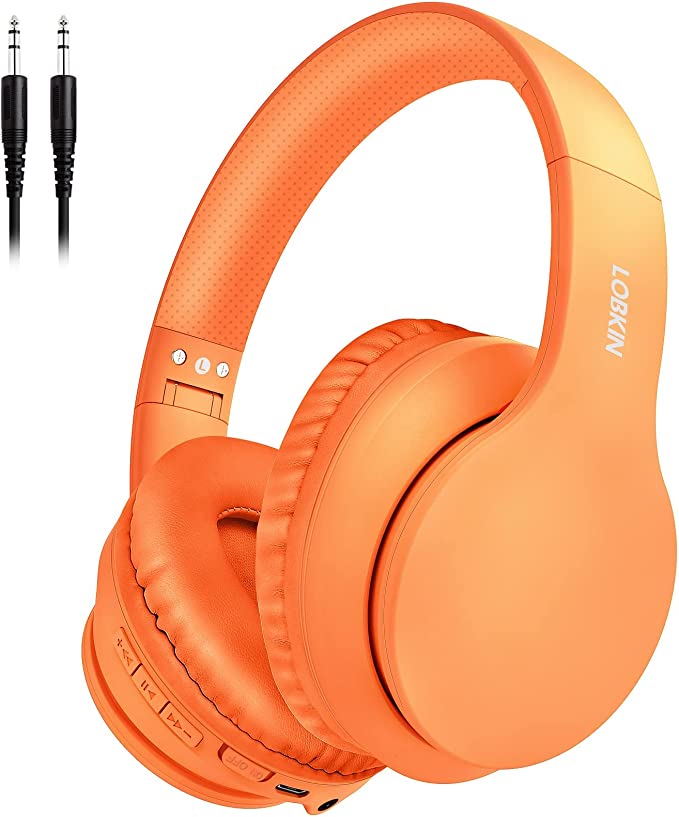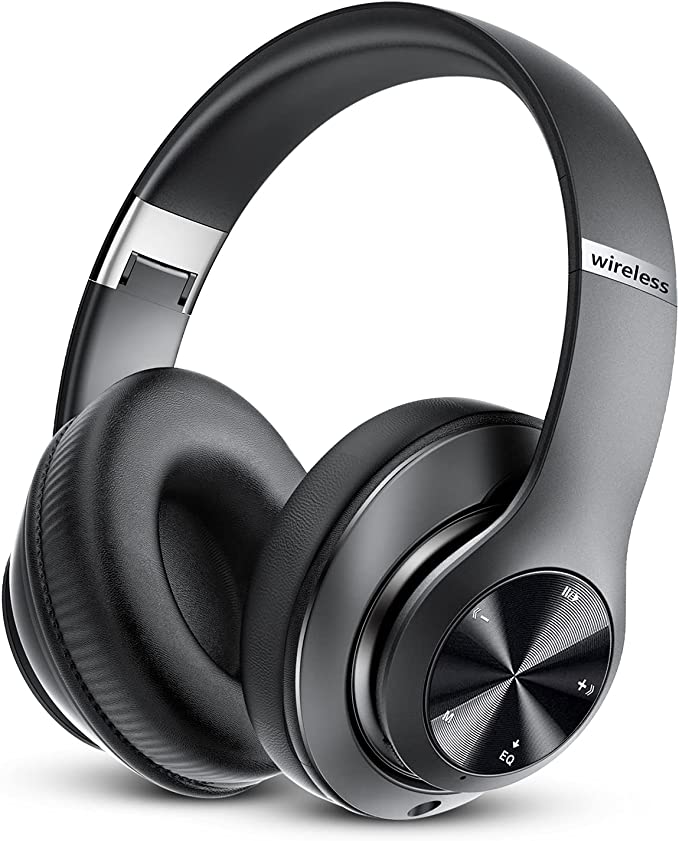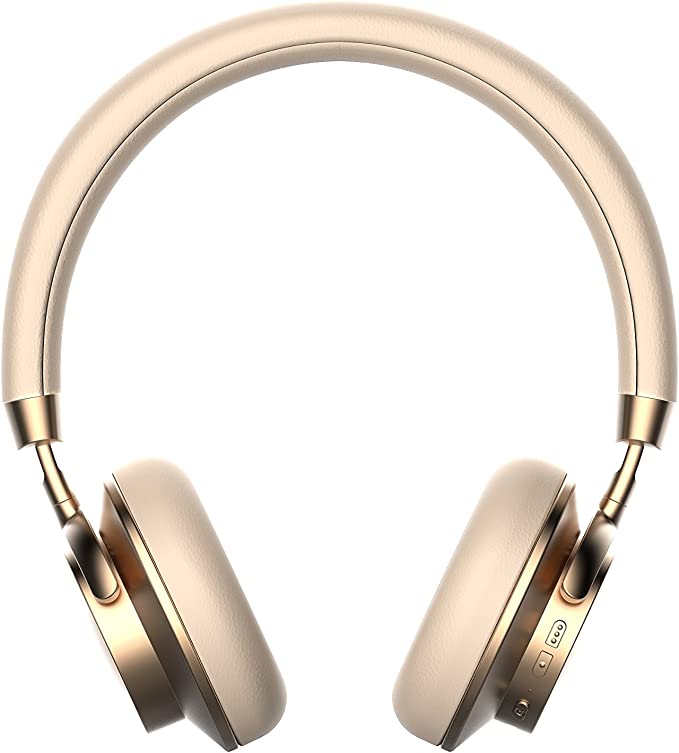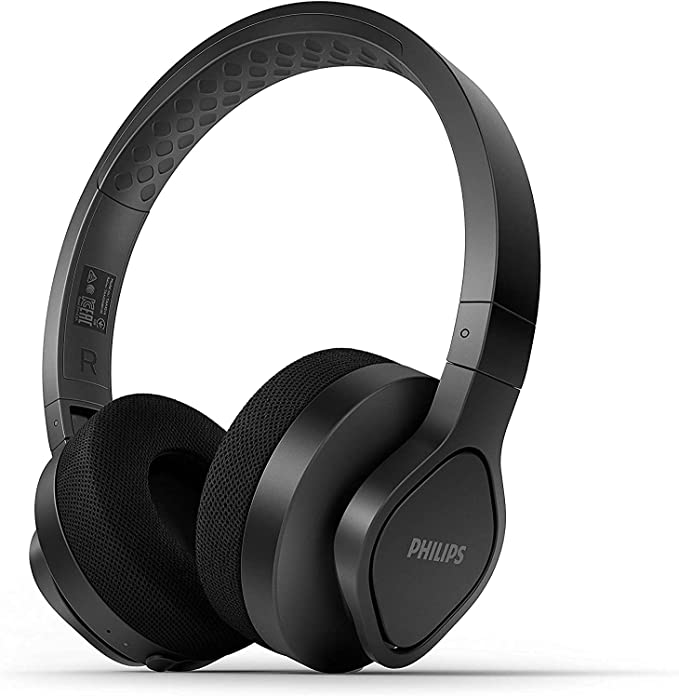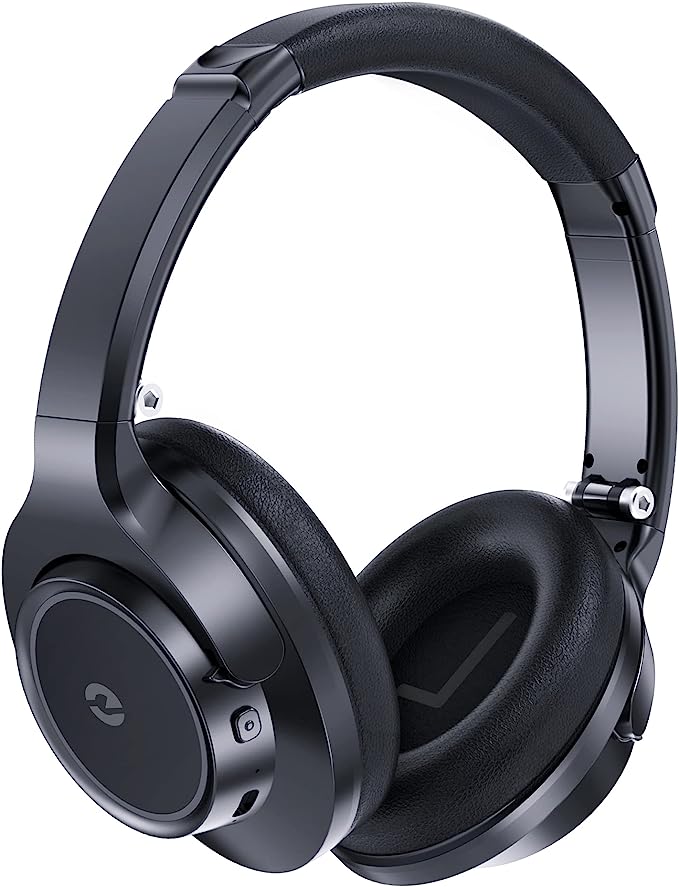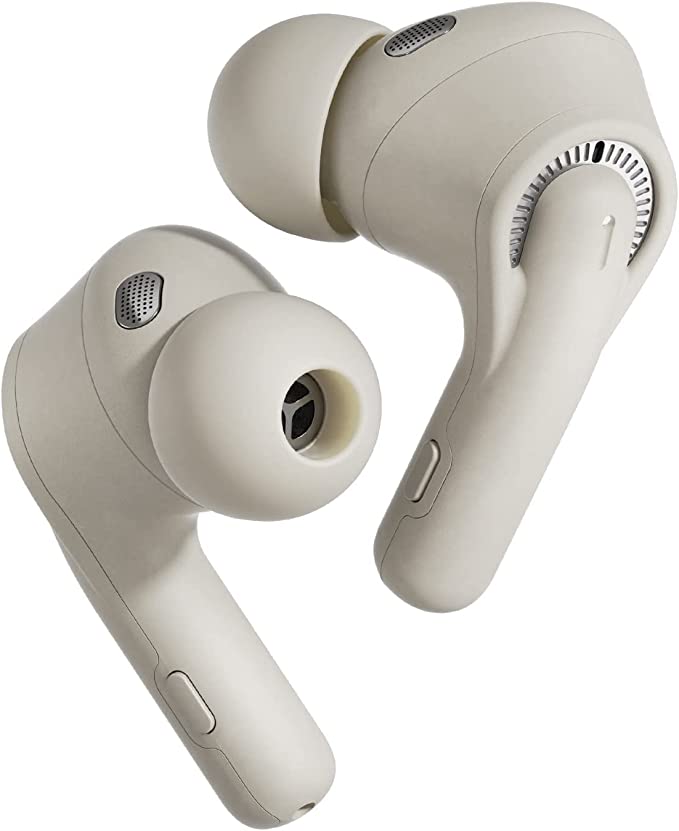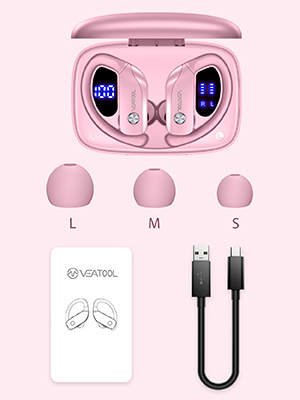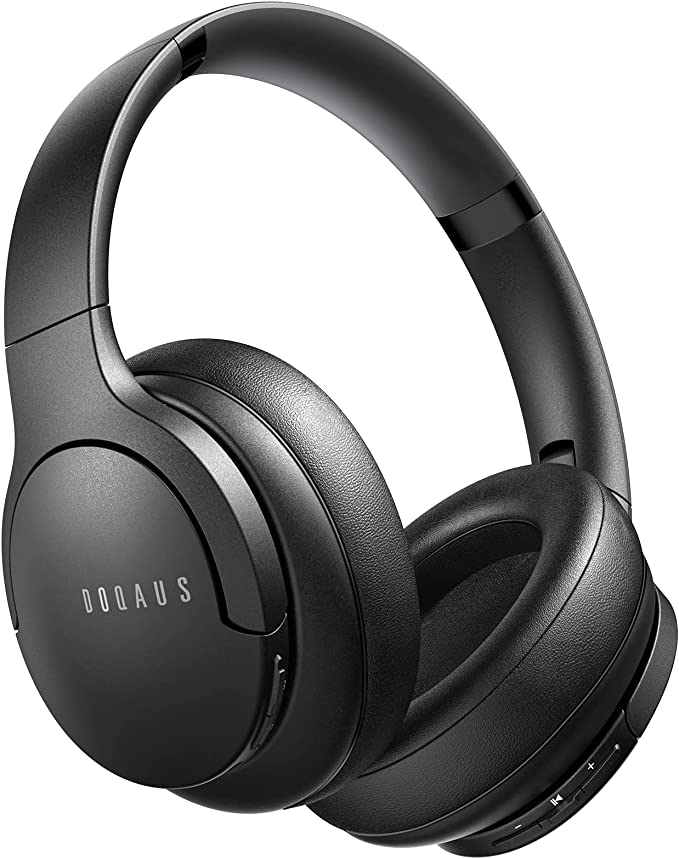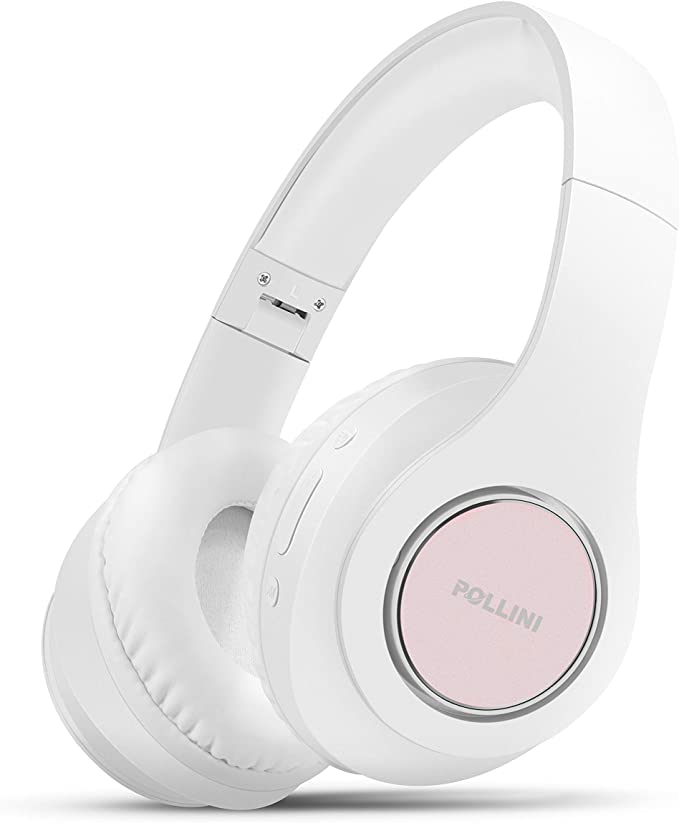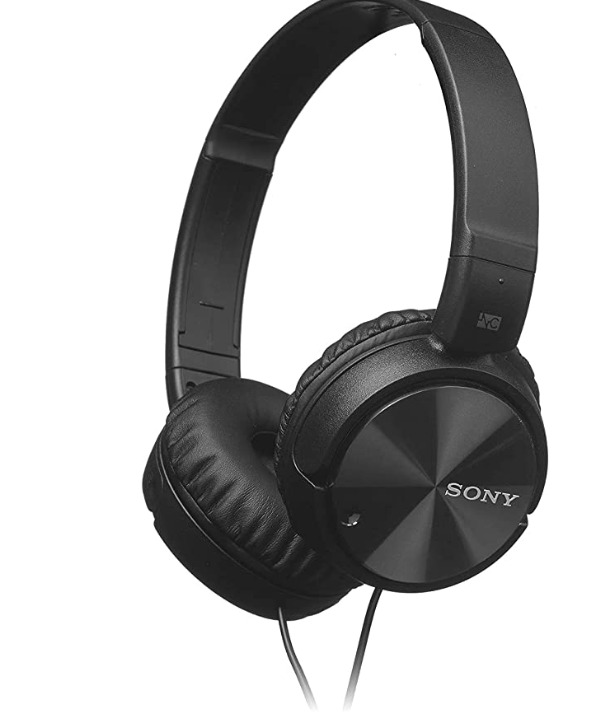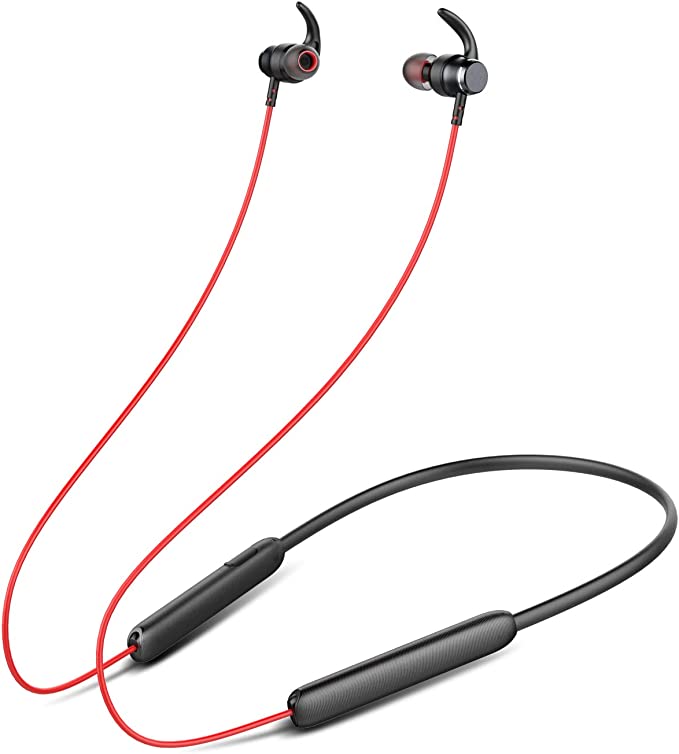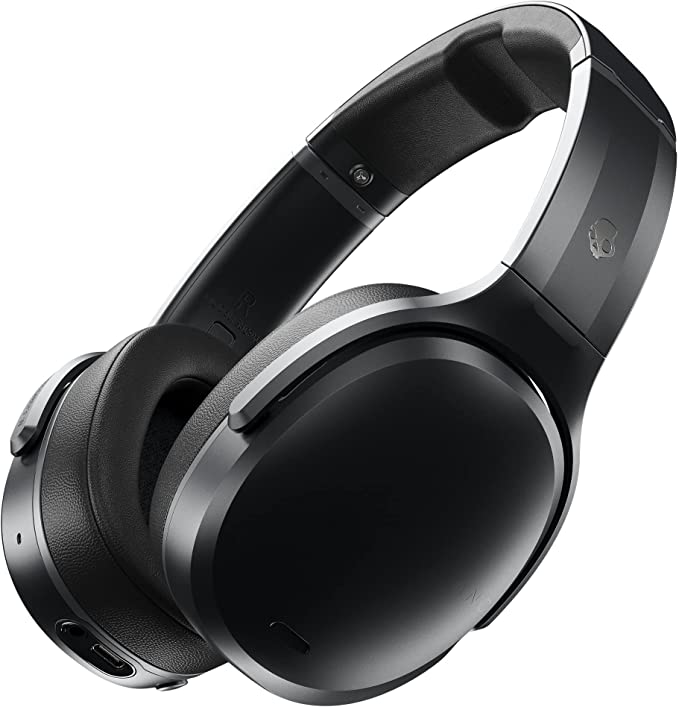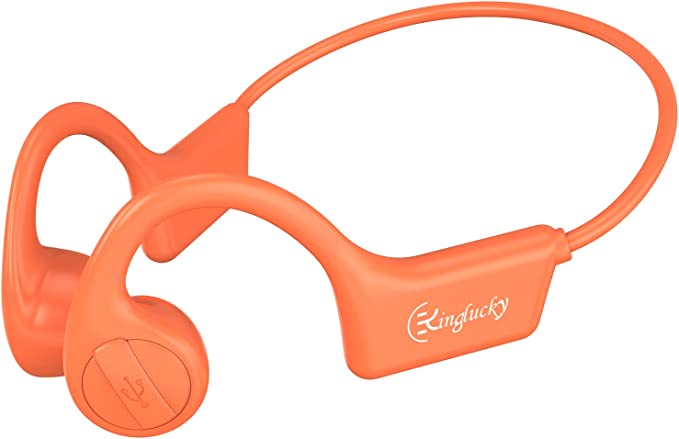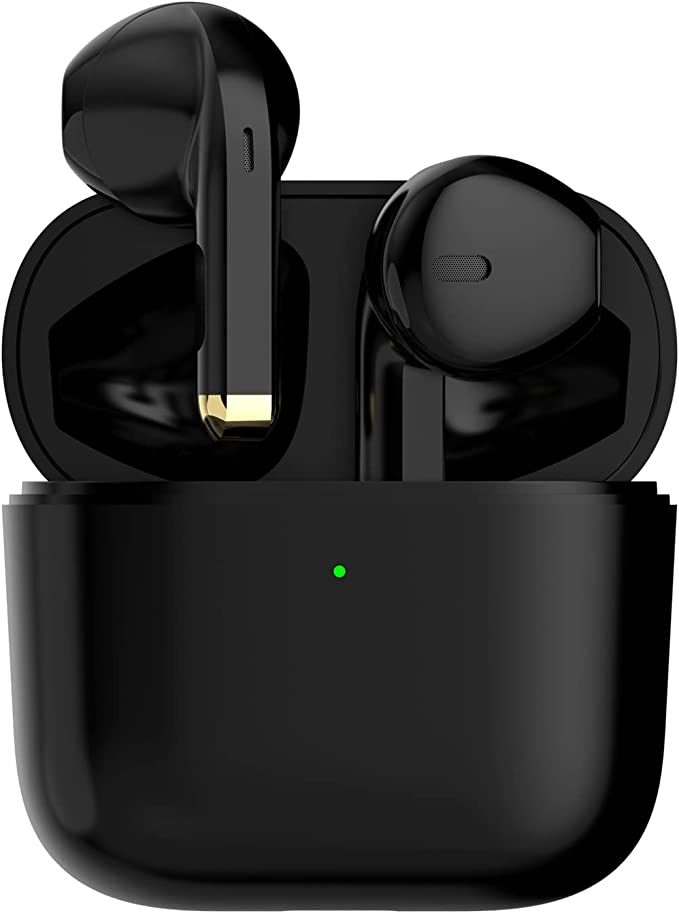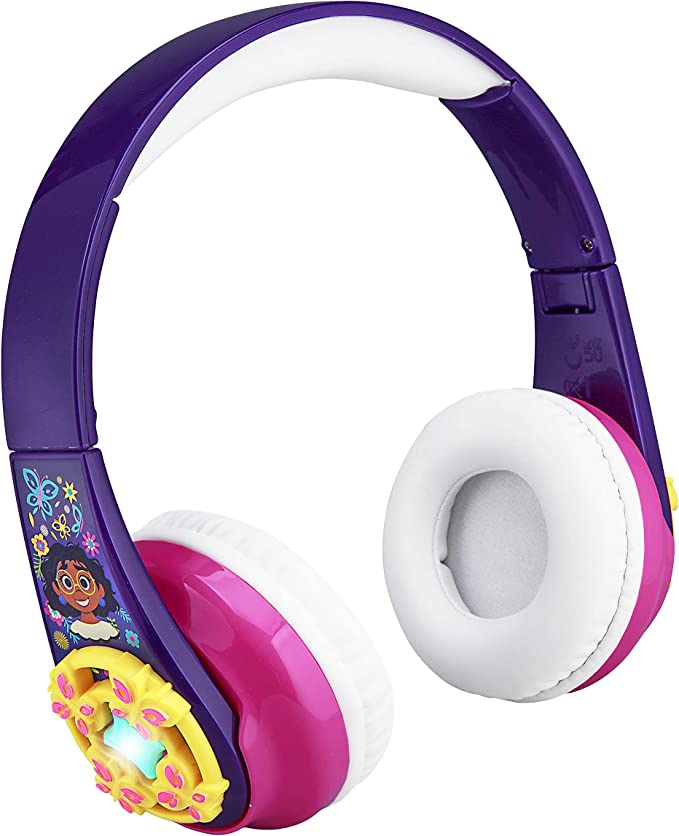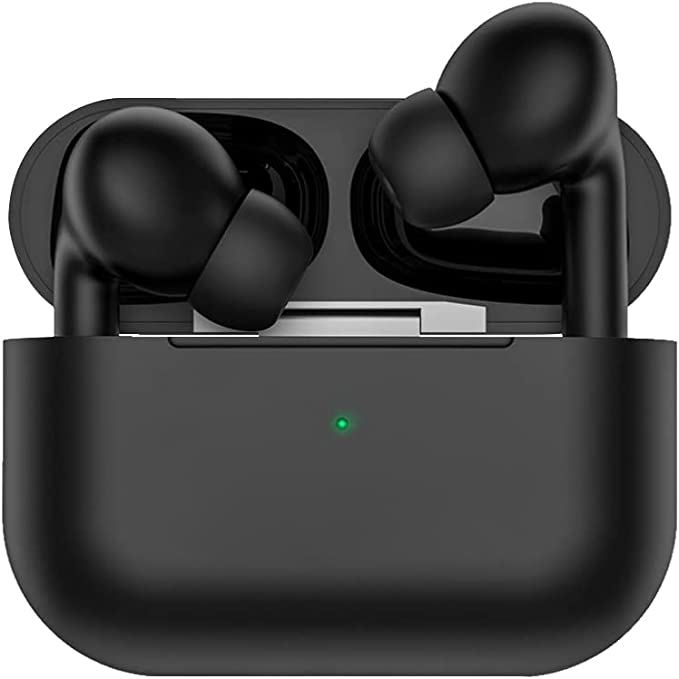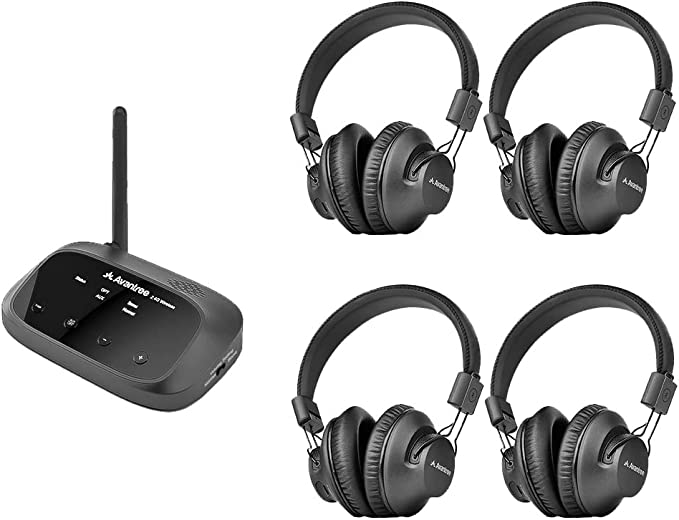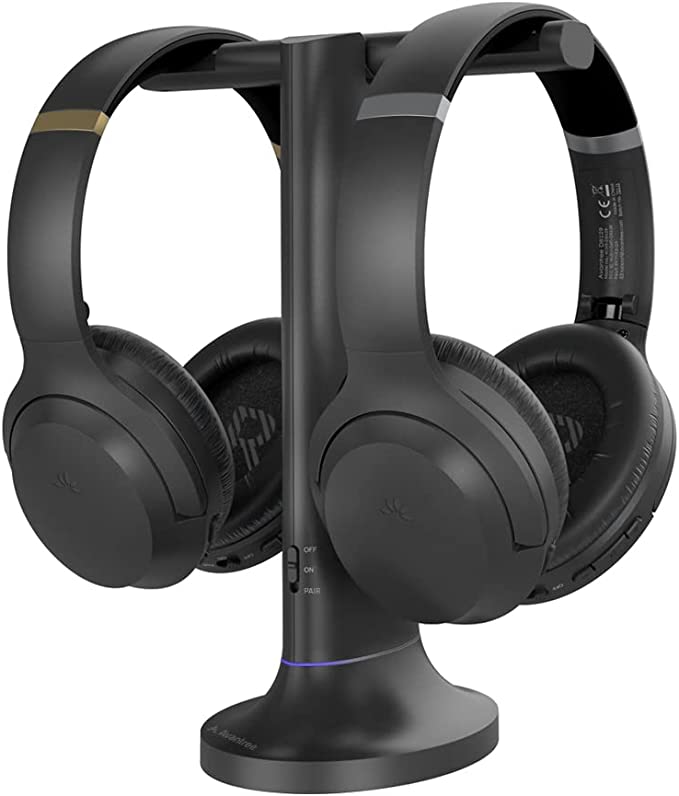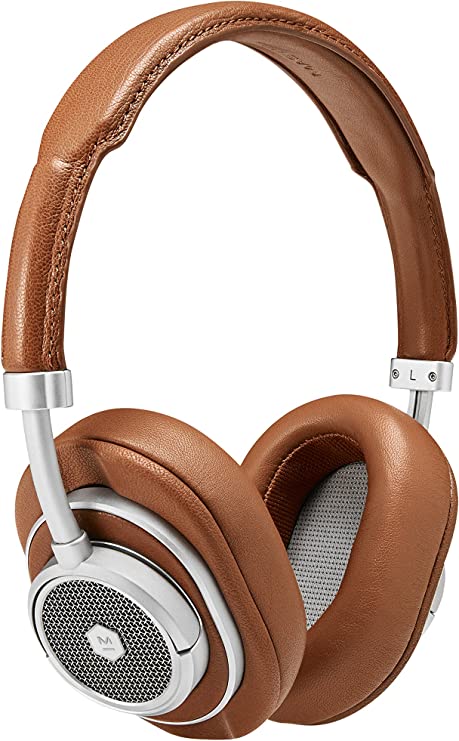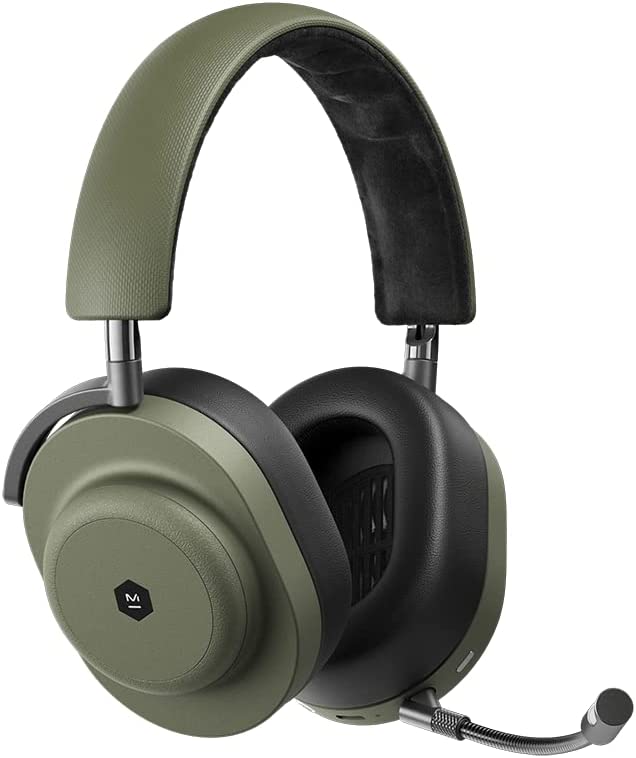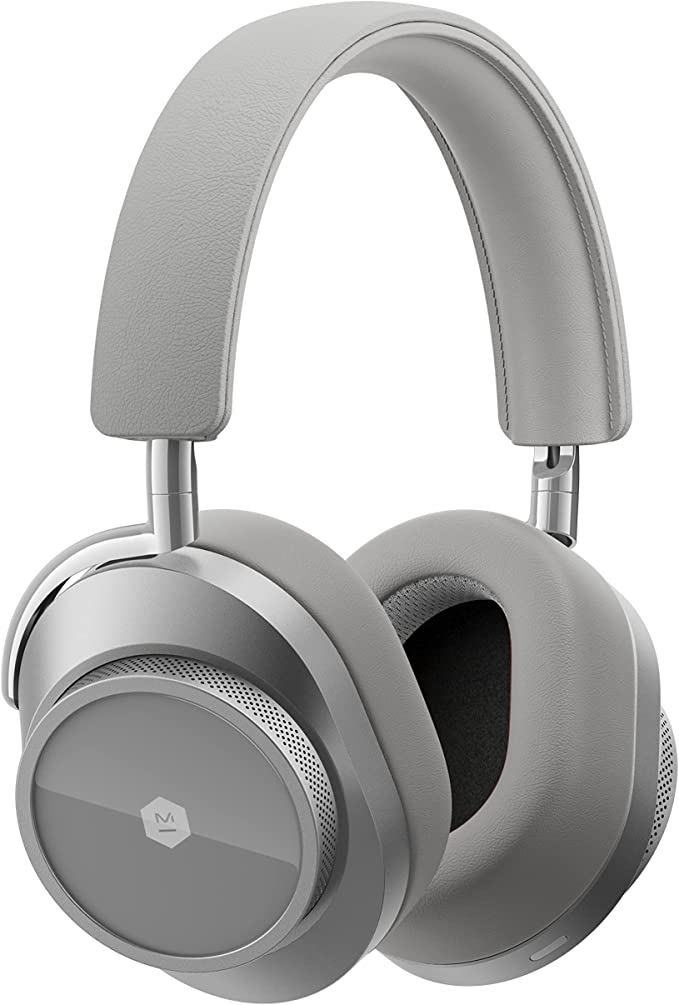DOQAUS Life 3 Wireless Headphones: The Science of Immersive Sound, All-Day Comfort, and Personalized Audio
Update on May 15, 2025, 11:50 a.m.
In our bustling, ever-connected world, we often seek refuge in a space contratosymphony of our own making: the personal sound bubble. Headphones, once clunky utilitarian devices tethered to stationary equipment, have blossomed into sleek, indispensable companions. They are our portals to music that moves us, podcasts that enlighten, and quiet focus amidst the daily cacophony. Today, we’re not just looking at another pair of headphones; we’re embarking on an auditory adventure, using the DOQAUS Life 3 Wireless Headphones, Over Ear as our trusty specimen to dissect the fascinating science and thoughtful engineering that bring sound to our ears with such convenience and increasing fidelity.

The Heartbeat of a Thousand Songs: Inside the 40mm Sonic Engines
Imagine holding a miniature orchestra in your hands, each component perfectly tuned to bring a symphony to life. That’s akin to what the two 40mm large bezel driver units within the DOQAUS Life 3 aim to achieve for your ears. These drivers are the very soul of the headphones, the engines that convert silent electrical signals into the vibrant sound waves that stir emotion and convey information.
But how does this magic happen? At its core, a dynamic driver—the most common type found in headphones like these—operates on a beautiful principle of electromagnetism, a concept that powers much of our modern world. An audio signal, essentially a fluctuating electrical current, flows into a finely wound voice coil. This coil is attached to a lightweight yet rigid diaphragm (think of it as a tiny, precise drum skin) and is suspended within a powerful magnetic field. As the current changes direction and intensity, it creates a fluctuating magnetic force that pushes and pulls the voice coil, causing the diaphragm to vibrate with incredible speed and precision. These vibrations displace the surrounding air, creating pressure waves—the very essence of sound.
Now, why 40mm? In the realm of speaker and headphone drivers, size can indeed be a significant factor, though it’s not the only one. A larger diaphragm surface area, like that in a 40mm driver, generally has an easier time moving a greater volume of air. This is particularly beneficial for reproducing lower frequencies—the bass and sub-bass notes that provide a sense of fullness, warmth, and impact in music. Think of a large bass drum versus a small snare; the bass drum’s larger surface inherently moves more air to create those deep, resonant tones. While a well-engineered smaller driver can certainly perform impressively, a 40mm unit offers a solid physical foundation for achieving a broad frequency response, contributing to the “Hi-Fi Stereo sound” experience mentioned in the product’s description. “Hi-Fi,” or High Fidelity, speaks to the goal of reproducing sound faithfully, with minimal distortion and an accurate representation of the original recording. The claim of “CD quality sound” further alludes to a benchmark of digital audio (typically 16-bit/44.1kHz), and while Bluetooth audio inherently involves some form of compression, the drivers are the ultimate arbiters of how well that decoded signal is translated into the sound you actually hear. The quality of the diaphragm material, the strength and precision of the magnetic motor system, and the acoustic design of the earcup all play crucial roles alongside driver size in this intricate sonic dance.

Your Sonic Fingerprint: The Art and Alchemy of Equalization
If drivers are the voice of the headphones, then equalization (EQ) is the art of shaping that voice, tailoring it to your personal taste or the specific demands of the audio content. The DOQAUS Life 3 offers 3 EQ modes: Well-balanced, Bass boosted, and High definition, effectively placing a simplified sound alchemist’s toolkit at your fingertips. It’s like a chef subtly adjusting spices: the core ingredients are the same, but the final flavor profile can be distinctly different.
But what’s happening scientifically when you switch between these modes? EQ is the process of adjusting the amplitude (or loudness) of specific frequency bands within the audio spectrum. Our ears don’t perceive all frequencies with equal loudness, a phenomenon described by psychoacoustic concepts like the Fletcher-Munson curves (or more updated ISO 226:2003 equal-loudness contours). These curves show that our hearing is most sensitive in the midrange frequencies (where human speech primarily resides) and less so at the extreme low and high ends, especially at lower listening volumes. EQ can help compensate for these perceptual nuances or simply cater to our preferences.
Let’s peek at what these modes in the DOQAUS Life 3 likely entail:
- Well-balanced: This mode typically aims for a relatively “flat” or neutral frequency response. The goal here isn’t to artificially boost or cut any particular range but to present the audio as faithfully as possible to the original mix. This is often preferred by audiophiles, audio professionals for monitoring, or for listeners who appreciate an uncolored sound across diverse genres.
- Bass boosted: As the name implies, this mode will amplify the low-frequency range (e.g., roughly 20Hz to 250Hz). This can add a satisfying thump to kick drums, a resonant growl to bass guitars, or cinematic impact to explosions in movies. It’s a popular choice for genres like EDM, hip-hop, or action films. However, an over-enthusiastic bass boost, if not carefully implemented, can sometimes lead to a “muddy” or boomy sound that overshadows midrange clarity.
- High definition: This mode likely focuses on enhancing the upper-midrange and higher frequencies (e.g., roughly 2kHz to 20kHz). Boosting this range can bring out the clarity in vocals, the crisp attack of cymbals, the subtle details in string instruments, or an overall sense of “airiness” and space in the music. It can make acoustic tracks sparkle or dialogue in podcasts more articulate.
By offering these choices, the DOQAUS Life 3 acknowledges that there’s no single “perfect” sound for everyone or every situation. It empowers you to experiment and find the sonic signature that best resonates with your ears and the audio you’re enjoying, transforming passive listening into a more interactive and personalized experience.

Cutting the Cord, Not the Quality: Navigating the Wireless Waves with Bluetooth 5.3
The sheer liberation of wireless audio has fundamentally changed how we interact with sound. No more tangled cables snagging on doorknobs or limiting our movement. The DOQAUS Life 3 embraces this freedom with Bluetooth 5.3 technology, a testament to how far this short-range wireless standard has come since its inception.
Bluetooth, named rather whimsically after a 10th-century Danish king, Harald “Bluetooth” Gormsson, famed for uniting Danish tribes, was initially conceived to unite different communication devices. In its early days, audio transmission was a secondary concern and often of lower quality. However, successive generations have brought significant improvements. The product description for the Life 3 highlights that Bluetooth 5.3 offers “more stable transmission speed, lower latency and better audio output.” Let’s unpack these claims from a scientific standpoint:
- Stable Transmission & Speed: Bluetooth operates in the crowded 2.4 GHz radio frequency band, shared with Wi-Fi, microwaves, and other devices. Bluetooth 5.3 incorporates features like improved channel classification and periodic advertising enhancements that can lead to more robust connections, less interference, and more efficient data transfer, contributing to that feeling of stability.
- Lower Latency: Latency is the delay between when an audio signal is generated by your source device (phone, laptop) and when it’s actually heard in your headphones. High latency is the bane of gamers and video watchers, leading to the annoying “lip-sync” issue where dialogue doesn’t match the on-screen action. While the Life 3 isn’t marketed as a dedicated gaming headset, lower latency is a universal benefit. Bluetooth 5.3 itself doesn’t guarantee a specific latency figure, as this also heavily depends on the audio codecs used and the processing power of both the transmitting and receiving devices, but it provides a more capable foundation.
- Better Audio Output: The “better audio output” claim is often linked to the capabilities of the Bluetooth version to support more advanced audio codecs and handle higher data rates more efficiently. Audio codecs are algorithms that compress and decompress digital audio data for wireless transmission. The most basic codec, SBC (Low Complexity Subband Codec), is mandatory for all A2DP (Advanced Audio Distribution Profile) stereo Bluetooth headphones, but it’s not always the best for audio quality. Other codecs like AAC (favored by Apple devices) and various flavors of aptX (developed by Qualcomm) can offer improved fidelity, lower latency, or both. While the specific codecs supported by the DOQAUS Life 3 aren’t detailed in the provided source, Bluetooth 5.3 is well-equipped to handle these more advanced codecs if implemented by the manufacturer.
Beyond music and videos, the Life 3 features a built-in microphone for “hands-free clear phone communication.” These microphones are typically tiny MEMS (Micro-Electro-Mechanical Systems) units, chosen for their small size, low power consumption, and decent sensitivity. The clarity of calls also depends on the microphone’s placement, any noise-cancellation algorithms applied to the microphone signal (to reduce background noise for the person on the other end), and the overall Bluetooth connection quality.

The Marathon Listener’s Ally: Engineering All-Day Comfort and Epic Endurance
What good is incredible sound if wearing the headphones feels like a medieval torture device after an hour? Recognizing this, the DOQAUS Life 3 emphasizes features designed for extended listening pleasure, boasting an impressive up to 52 hours of playtime and a design focused on comfort. One user, Ashlyn, even noted in the provided Amazon product details that they are “super comfortable” and the “battery life lasts forever.”
The science of ergonomics—designing products to fit the human body optimally and efficiently—is paramount here. The Life 3’s over-ear design (also known as circumaural) is a good start. Unlike on-ear headphones that press directly against the ear pinna, over-ear headphones aim to create a seal around the entire ear. This generally distributes clamping force more evenly across a larger area of the head, reducing pressure points.
- Soft Pillows & Gentle Clamping: The “soft over-ear pillows” are likely made from a material like memory foam, which is viscoelastic – it deforms under pressure and slowly returns to its original shape, contouring to the unique shape of the user’s head. This, combined with an “individual, flexible fit for every head shape,” ensures the clamping force exerted by the headband is firm enough for a secure fit but gentle enough for prolonged wear. The “advanced ventilation” mentioned could refer to breathable earcup materials or acoustic design elements that help dissipate heat, a common comfort issue.
- Lightweight Champion: At a claimed 230g (0.5 lb), the Life 3 headphones are relatively lightweight. This is crucial because even perfectly shaped earcups can become burdensome if the overall mass is too high, leading to neck strain over time.
- Passive Noise Isolation: A good over-ear seal, as suggested by the advice to “Make sure that the ear is snug around your ears for a better sound experience,” also contributes to passive noise isolation. This means the physical barrier of the earcups helps to block out some ambient sounds, allowing you to immerse yourself in the audio without needing to crank up the volume excessively. Ashlyn’s comment that “sounds are muffled” aligns with the effect of decent passive isolation.
Then there’s the remarkable 52-hour playtime. This marathon endurance is primarily thanks to advancements in Lithium Polymer (Li-Po) battery technology, which offers high energy density in a lightweight and often slim package. Equally important are the power-efficient Bluetooth chipsets and sophisticated power management integrated circuits (PMICs) within the headphones. These components work together to sip, rather than gulp, energy, allowing for days, not just hours, of listening on a single charge. For many, 52 hours could translate to a full week of commuting, several long-haul flights, or countless hours موسیقی or podcast enjoyment without a flicker of battery anxiety.
And for those moments when you do run out of power, or simply prefer a direct connection, the included 3.5 mm audio cable provides a reliable wired option. This not only offers a fail-safe but also, in some cases, can provide a theoretically purer audio signal path by bypassing the Bluetooth D/A (Digital-to-Analog) conversion and amplification stages within the headphones, relying instead on the source device’s audio output. The foldable design further enhances its practicality, making it easier to stow away in a bag for travel or commuting.

Coda: The Symphony of Science in Your Everyday Audio
As our journey through the inner workings of the DOQAUS Life 3 headphones concludes, it’s clear that even an accessible audio device is a marvel of interdisciplinary science and engineering. From the acoustic principles governing its 40mm drivers and the psychoacoustic considerations behind its EQ modes, to the complex radio wave ballet of Bluetooth 5.3 and the ergonomic artistry ensuring comfort over an astonishing 52 hours of playtime—every feature is a note in a carefully composed symphony.
Understanding this underlying science doesn’t just demystify the technology; it deepens our appreciation for the ingenuity packed into these everyday companions. The DOQAUS Life 3, with its blend of features, serves as a tangible example of how technology strives to meet our enduring human desire for rich, personal, and uninterrupted sound experiences. As audio technology continues its relentless march forward, promising even smarter, more adaptive, and seamlessly integrated ways to listen, one thing remains certain: the quest to perfect our personal sound bubble is a tune that will play on for generations to come.
